Bros is self-described as avant-garde and attempts to push the boundaries of gastronomy through inventing new flavors using experimental techniques in fermentation and lab-based processes. They create highly refined and precisely constructed recipes in a molecular style while retaining a traditional Puglian foundation to their inspiration and ingredients.
Floriano Pellegrino, 32, and Isabella Potì, 27, the famous and sexy Italian-chef power-couple, helm their flagship restaurant Bros. Opened in 2015 (originally with Floriano’s two brothers), the restaurant earned its first Michelin star in 2018 when the chefs were only 28/23 respectively. Both have trained with famous chefs around the world and both have appeared on Forbes’s 30 under 30 list. They even co-own their own rugby club.
Floriano has studied with Luis Andoni Aduriz, Eneko Atxa, Alexandre Gauthier, Rene Redzepi, the French Claude Bosi in London, and his mentor chef Martin Berasategui. As of 2021 he is currently ranked as #69 of the world’s best 100 chefs by The Best Chef Awards.
Isabella has studied with Paco Torreblanca, Berasategui, at Geranium, and Mirazur. And has appeared on television as a judge on Masterchef, in the cast of ‘Gustibus’, and as a judge for “Il ristorante degli Chef”.
On a personal note, I have been to molecular and experimental front-runners like Alinea and NOMA and always left secretly just a little disappointed, hoping to have experienced just a bit more experimentation and risk taking. For a dish that took the leap to new places. The kinds of experiments I have seen going on behind the curtain at these places but never made it to my plate. At Bros, I really feel like I experienced something new, something striving to navigate unexplored places. Is it art, is it craft? I personally don’t care. What I know is that it was delicious, evocative, creative, and inspiring. I let myself be open and was transported. I had a wonderful experience from start to finish and I want to encourage their efforts in finding what’s next.
A comment on Geraldine DeRuiter’s review: “Bros., Lecce: We Eat at The Worst Michelin Starred Restaurant, Ever”
In the off chance you missed the review, you can read that article here. The review went viral, being picked up by news sources and comedy shows across the country, celebrating the bad experience that Geraldine reports.
I know Geraldine and Rand socially through friends, they’re good people, and I have great affection for them. And I won’t argue their experience, I wasn’t there. But my experience couldn’t have been more different. I discovered a great restaurant with informative and attentive staff presenting some of the most interesting and experimental cuisine that I’ve encountered.
It’s no surprise to me that the story was picked up and repeated ad nauseum. America loves the populous reductionist caricature of a tiny turnip on a giant plate in a fancy restaurant that’s been repeated on show after show for most of my life. It’s comedy gold, apparently. Ideas and craft and good taste for that matter are for rubes. And if you don’t immediately understand or comprehend it without effort, you should get angry and ridicule it. I think that sums up the popular attitude towards art today generally. And probably why we keep electing leaders without the capacity for abstract thought.
To me, I’m sad that an opportunity to experience something unique and creative was missed because of the inability to open up past a limited expectation. I certainly was served food. But further, experienced new flavors, new techniques, razor-precise constructions, that took enormous man-hours to put together, and had volumes to say if you choose to listen. Something new. Which is a rare thing to find.
I’m sure if I approached my own meal with smug face-palming mockery, thoughtlessly throwing back bites that have been clearly labored over and carefully constructed, then I would have angrily snarfed my way through the entire meal waiting on the steak course too. And I might expect that when a cook presents the course he’s been obsessively constructing for days only to have it laughed at en masse and held up for an exasperated selfie, and by an American tourist no less, the service might drop off a bit after that.
Sure, the restaurant should probably state upfront that substitutions are not welcome and that there is limited ability to adjust for dietary restrictions (missed courses are not cool), so that you can make that choice before booking. And the pretense of the whole art gallery metaphor might be obscuring the restaurant’s gastronomic achievements more than helping. But who am I to say?
The take away here might be when you’re unsure about booking a $200 a plate restaurant throwing around words like avant-garde gastronomy and food art gallery, just stay home. It’s not going to be your scene (even if you like to think that it is). You don’t have to mock the staff and chef for 4 hours, write a mean-spirited TripAdvisor review, and get offended when the chef essentially tells you to fuck off when your blog goes viral.
You might even deserve it.
But please, judge for yourself. I present my experience below. I hope it can serve as a counterbalance to two very divergent interpretations of the Bros experience.
Arrival
The restaurant is located in the magical white stone alleyways of Lecce’s oldtown near the Roman amphitheater. We arrived on foot from our apartment nearby enjoying the Lecce Baroque churches and old residential buildings as we went. The restaurant is conspicuously understated without a traditional sign, so we had to get close to find the door. There’s a welcome mat with the name on it and in a subtle white embossing on the door, “Man on a Horse” and verbiage about a gallery. The door was locked. It kind of reminded me of arriving at Alinea in Chicago. You’re supposed to ring the buzzer and you’ll be let in. But when I pulled the door someone noticed inside and immediately let us in. When we entered, the man at the door stamped our wrists with a small black stamp, “Man on a Horse”.
The meal
The restaurant has two tasting menu options: The Man on a Horse 25 Steps for 200 euros or The Man on a Horse 20 Steps for 150 euros. Three pairing options with a separate wine menu. No a la carte. You choose your menu when you book your reservation and the meal is made to order.
We chose the 20 step menu purely for frugality but immediately regretted not choosing the longer set once we got started.
A QR code is included tableside to access the wine list and a supplemental online experience has been created for the meal. For each of the 25 courses, a local artist has been asked to interpret the recipe in their particular medium. Video, paintings, sculptures, digital works, etc. You are lead through each course with a short description of the dish, a longer description of the work of art created for the recipe, and a visual representation of the work of art. You then click to the next page, and so on, for each course. This is entirely optional, we didn’t really follow along, but it was an interesting concept. The pieces are all physically located within the restaurant space so you can walk around and look at them.
Course 1
Iced tamarind meringue
The first course was pretty straightforward. Tart, cold, crunchy, sweet. There’s a theme of crunchy breads and crackers that completely dissolve when you eat them and that motif starts here. I liked it and it was presented interestingly.
Course 2
Grilled tomato skewer, oregano and flowers
This was a little flavor bomb. The roasted tomatoes were chewy but not as solid as a sun-dried tomato. The oregano and flowers really added punch. It took a couple bites to eat. I just jammed the whole thing in my mouth but if you have a shorter throat you might need to look out for the metal spike.
Course 3
Razor clams, scapece
For the third course we were lead to a second room where they have a small bar in front of the kitchen entrance. You could watch the different courses being prepared in the back. On the bar, two metal fish cans and two perforated spoons. The lids are removed to expose the razor clams marinated in a vinegar sauce (scapece). The Puglia region is known for fish prepared in the scapece gallipolina style sold at festivals and I assume this was a play on that. The clam was firm on the outside but absolutely creamy on the inside. A great mix of flavors. One bite, and we were headed back to our table.
Course 4
Crispy onion.
The courses actually came as fast as you chose. When you were done with one the next was on the way out. We chose to slow things down a bit and take our time. I like a bit of time between courses.
This was a very intense bite. Seared, almost burnt, onions. Crispy thin sheets with a rich paste spread between them. Two little sandwiches put together. The flavor kept going and changing. Very delicious. Very umami. I didn’t want to drink the wine and stop the progression.
Course 5
Ricotta scante, mackerel.
Ricotta scante is an older way of saying Ricotta Forte Pugliese, a local specialty of ricotta cheese with a strong and spicy taste. The ball of cheese seems to be fried but soft, almost bread-like, and topped with a bit of raw mackerel. A very hot bite, I had to mouth breath for a bit, contrasted with the cold fish. The interplay between the two was quite nice. Once the cheese got in the mix it really took over the profile and I lost the mackerel. I really wanted the fish to last all the way through the bite. But only because I really enjoy mackerel.
This bite was served on a plastic cloud.
Course 6
Pork lard preserved in anchovy salt and bread.
Before the course our host brought out a large rectangle of pork lard in its full state with the anchovy salt covering it to demonstrate the process. Then brought our small squares to taste. It’s not a large cut but you’re eating pure lard, so you don’t really want a giant mouthful. It’s enough. The flavor was more understated than I expected. A nice note of the anchovy salt but really subtle, soft, melt in your mouth, creamy. The “bread” did melt in your mouth. Generally a nice mouth sensation.
Course 7
Egg yolk, fish eggs, almonds and sparkling cucumarazzu.
This was a fun course. I ate the whole thing in one bite but regret not getting a photo of the elements underneath. You expect the white topping to be cheese but it’s actually finely shredded almond. Underneath is creamy and tart. The fish eggs and cucumarazzu have an interesting texture in your mouth. Meloncella or cucumarazzu in the local dialect is something between a watermelon and a cucumber that only grows in the Puglia region (I’ve never heard of one). It’s watery and crunchy like the inside of a cucumber but the flavor is more like the white part of a watermelon between the sweet red and the rind. And the inside breaks apart into individual balls about the size of a small raspberry. Katy and I spent a long time trying to figure out what they were and eventually had to ask and the waiter carefully explained.
Course 8
Disc of nori seaweed, garlic curd and vanilla.
You’re presented with the nori disc which is reconstituted and very wet. Then the garlic curd with vanilla is spooned on top tableside. You wrap the whole thing up like a taco or burrito and eat with your fingers. Another decadent umami bomb. Rich and saturating. The white curd makes you think you’ll get sweet or light flavors but it’s quite deep and rich. You’re provided with a cold moist towel to clean you fingers.
Course 9
Wheat inoculated with koji, pecorino and basil.
If I had to pick, this was probably my least favorite course. It was certainly an interesting flavor, I enjoyed the wheat with the umami of the cheese, and the basil was good. But the texture of the wheat required a bit of chewing. I could actually do with a little less wheat. But it was still good.
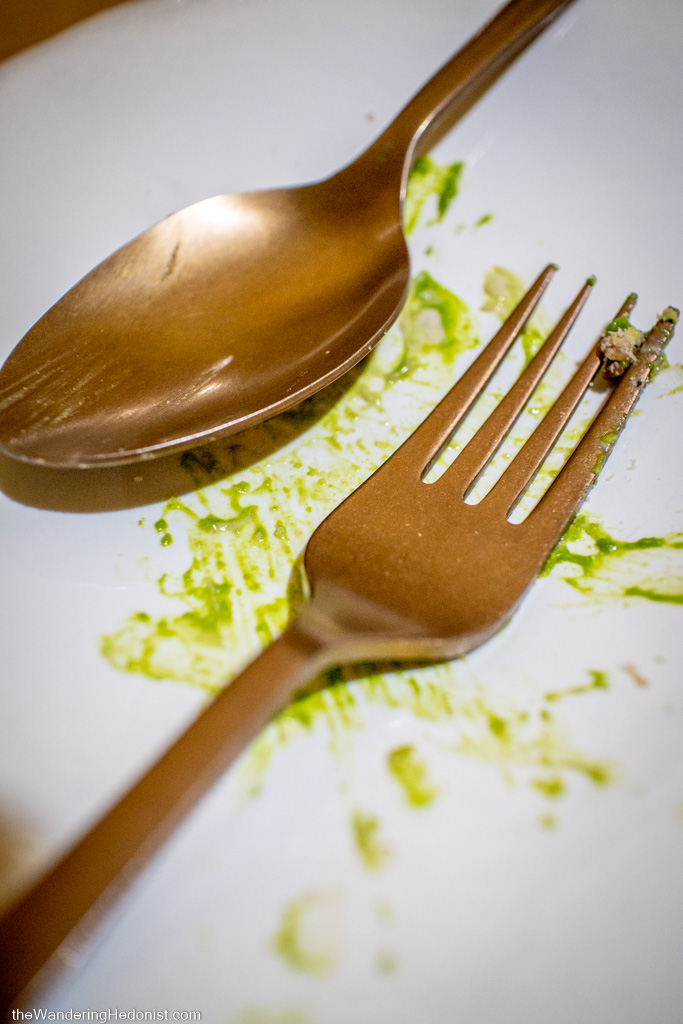
Course 10
Calf’s sweetbread, rancid colored fat from ham bones.
I am a fan of sweetbread and this course did not let me down. Cooked perfectly, a good body but not overly soft, lots of flavor. The fat added deep rich tones in a nice harmony. It’s easy to balk at the term rancid and dismiss it outright. But the chef has found an interesting process here that adds to the profile and tastes really good. If you can get over the word and experience the flavor, you’ll probably find it delicious like I did. Katy usually does not like sweetbreads but really enjoyed this dish.
Course 11
Dark lacquered eggplant with chickpea sauce, extremely ripe lemon.
Another great use of rot and decay. The lacquered eggplant is deep and rich and the rotting lemon adds a burst of citrus mixed with deep earthy tones. Assertive, smooth, tart but mellow, like … well … sort of like a caramelized lemon peel. That luxuriousness of caramelized eggplant. A great bite. Served on a hot stone.

Course 12
Duck, pickled watermelon, cut duck sauce with citrus.
The duck is tender, perfectly cooked. The watermelon is dried into a thin jerky and then reconstituted into a layer that’s hard to believe is watermelon. It adds a very sweet melon taste but you have to cut it with your knife. The sauce is a rich gravy with finger lime bits in there. Great dish.
Course 13
Alcoholic beet candy.
For this course we’re escorted outside and across the street to the restaurants test kitchen and fermentation lab. It has a strong NOMA vibe going on in there. Actually it looks exactly like NOMA’s outside test kitchen where you wait to go inside. You get to see all of the sinister jars bubbling away and buckets of goo that will eventually come together into interesting elements.
I love getting to see behind the curtain and see how things are getting made. I’m a huge fan of David Zilber and his fermentation kitchen and I was so excited to meet him again at NOMA last year, and this lab was certainly a continuation of that work there.
For this course we get a little tutorial on how it is made. A pan of potato starch is pocked with a melon baller and beet liquor is poured in. After several days, the liquor has formed a hard shell with the liquor still liquid inside. You get a cooking show style before and after and the course is one of the end products. The candy was straighforward, the beet liquor was good, and it was fun to see how it was made.
On the wall they’re playing the video piece one of the artists made to accompany the recipe.
Course 14
Chicken livers, black banana. We wanted to approach the flavor and texture of foie gras, but in an ethical way and with a new, aerated texture.
Here we get a interesting attempt to reproduce the creaminess of foie gras with the more common chicken liver, which is chilled and highly aerated into a mouse, sliced like pie, and plated. The sauce is made from black and unripe bananas, and you get a cube of black banana to round the flavors out. An interesting dish that’s pushing the limits and really using the flavors of decomposition to up the richness of a preparation.
Course 15
Rancid butter ice cream, freeze-dried fruit and flowers.
Another dish that one might dismiss because of the word rancid but used in a delicious and creative way. The butter ice cream is sweet and light and serves as the base for an explosion of dried fruits and flowers. The honey comb sphere is split tableside and finished by grinding the half sphere into the toppings and plated. Rancid here is being used to create new flavors and extending the palette into new directions. It was very good.
Course 16
Cotton candy and black cherry.
The proverbial sweet tooth. A fun and creative plating. A sheet of cotton candy is crimped around a tart and very flavorful back cherry filling in the style of an empanada or dumpling. I took it in one bite but it was almost too much flavor. Katy was smarter with the two bite approach.
I’ve included an example of the paired art piece with this dish that you could see on the host’s stand in the next room. A pair of porcelain busts, one of a gorilla, and another of a man missing a tooth. The missing tooth is the tie in.
Course 17
Apricot and anise, similar to a sandwich
This was a pretty simple bite constructed very precisely. The apricot and anise gel worked well together and the light, dissolving crisps were used. I liked it and it echoed some of the earlier motifs.
Course 18
Hay ice cream with a plastic consistency given by mastic resin.
This was one of those dishes that really blew my mind. At its heart, ice cream on a strudel waffle. But the ice cream used both hay and another local plant found only in the Puglia region to create these fascinating earthy notes that stretched on and kept changing. It’s really hard to describe. The ice cream has also been treated with mastic resin giving it an interesting stiff quality and formed into a cone like a meat cone, then carved off in slices tableside and added to the waffle. Then when it warms it just melts like ice cream. I had never encountered these flavors before. I really loved it.
Course 19
Rose of red fruits, currants in spirit
This one was really about the serving vessel which was spectacular. Red fruits had been carved into a flower and tipped with a currant. It was tart. I couldn’t specifically place what fruits were used. I would have liked to have had more information about how the fruit was treated and what it was comprised of. But it looked really cool.
Course 20
Cold limoncello foam.
So we didn’t go for the 25 course and we had been waiting for the ceramic mouth course but by this point we were extremely disappointed that we probably weren’t going to get it. I mean I really really wanted the damn foam in the mouth thing. It’s basically the restaurants signature. And then, from behind the curtain, our mouths! We were crazy excited to get these.
These things are super fun and playful. I just don’t get the horror movie interpretation. It’s a fun and lighthearted dish about “Let’s make out.” Where you get to lick some shiny slick lips. I really liked it.
It’s a foam but it’s an ice foam. Think of it as a super fluffy slurpee. But made from limoncello, which is a southern Italy specialty.
Also, there are two chefs, a couple, a man and a woman, and they both molded their mouths and they have two different molds, both available on their online store. I certainly didn’t get any hints of misogyny or domination or any of that dark stuff. Maybe it takes a certain sense of humor to enjoy it.
Secretly I hope they extend the metaphor to a shiny ceramic penis and vagina that you have to lick clean.


Coffee
Your standard coffee. Pretty good. Nice serving set.
The details
As always I’m all about the details. And Bros certainly had a lot of them. I like the stamp on entry as a kind of take-away. I really enjoyed the wet cloth towels you were occasionally served for fingers. The cutlery was simple but kept changing, several different colors. The serving trays and dishes were all very creative and original but cohesive.

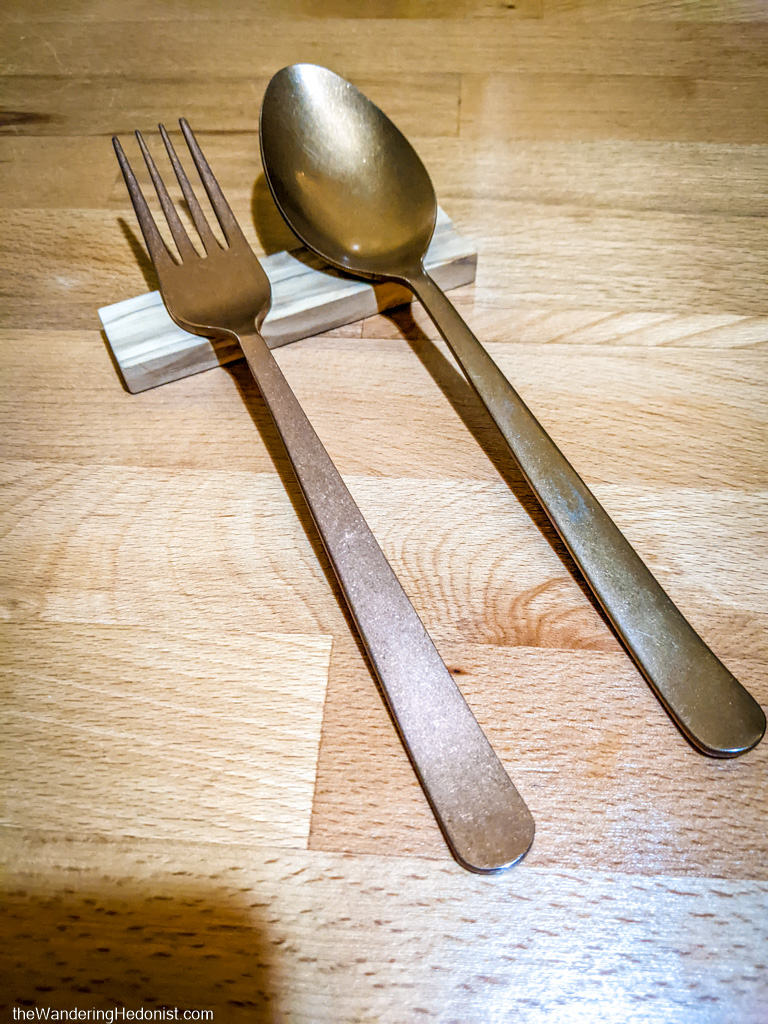
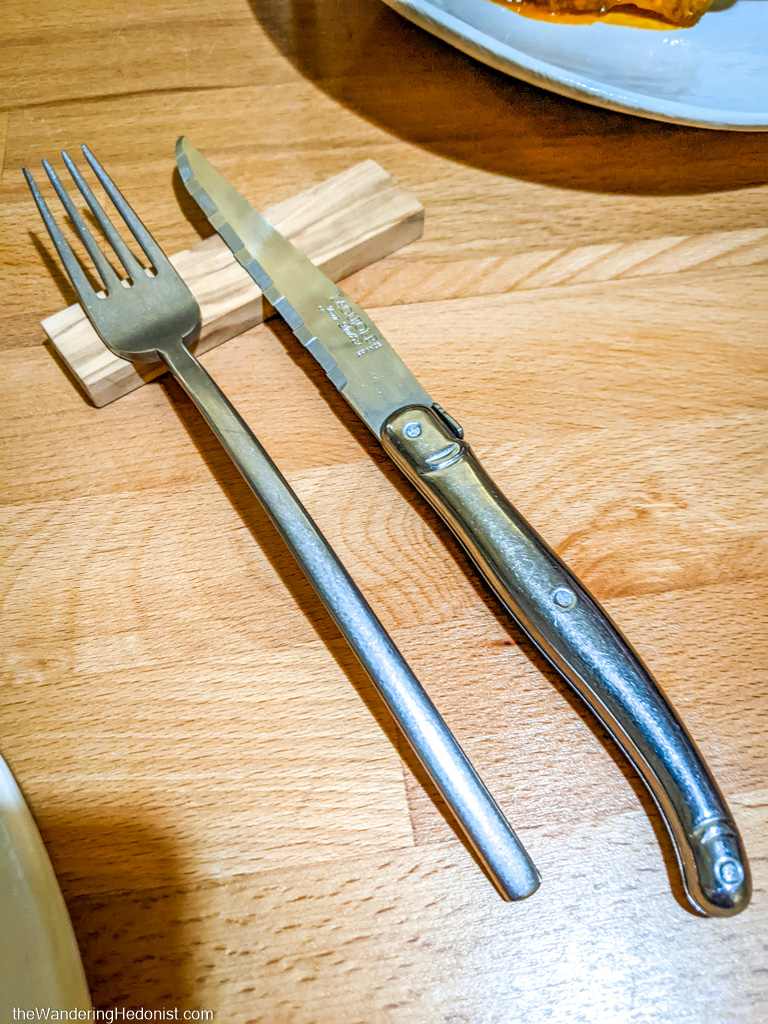
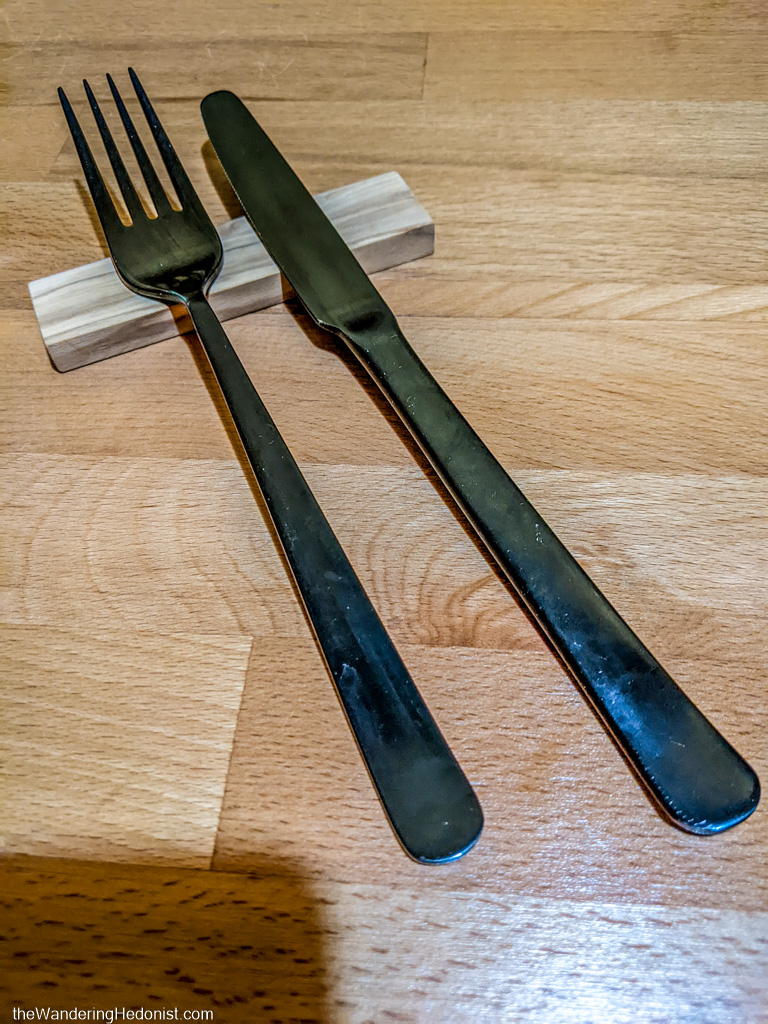
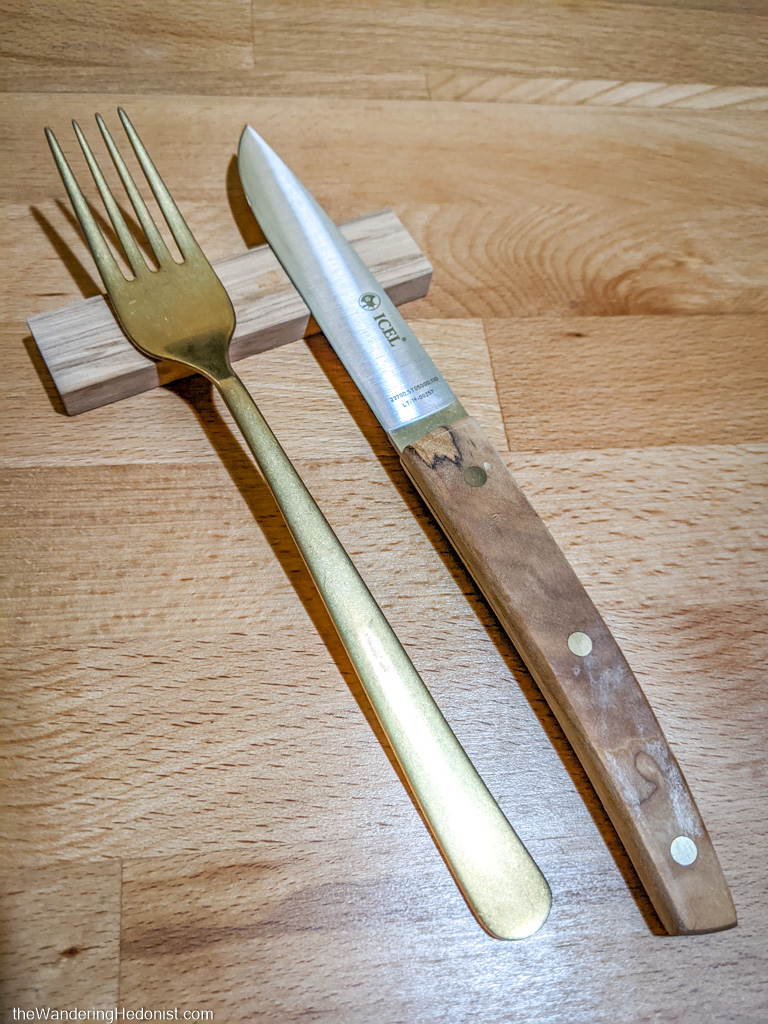
And the bathroom. I have a pet peeve about chintzy bathrooms and poor quality hand washing. I’m paying a fortune, is it really so hard to spruce it up a bit? I’m often disappointed. But I have to say, Bros had the best stocked bathroom I have been in at a restaurant at any number of Michelin stars. Nice cloth hand towels, an abundance of feminine supplies, even oral hygiene kits with a travel toothbrush, toothpaste, and floss. This place was amazing! Kudos!
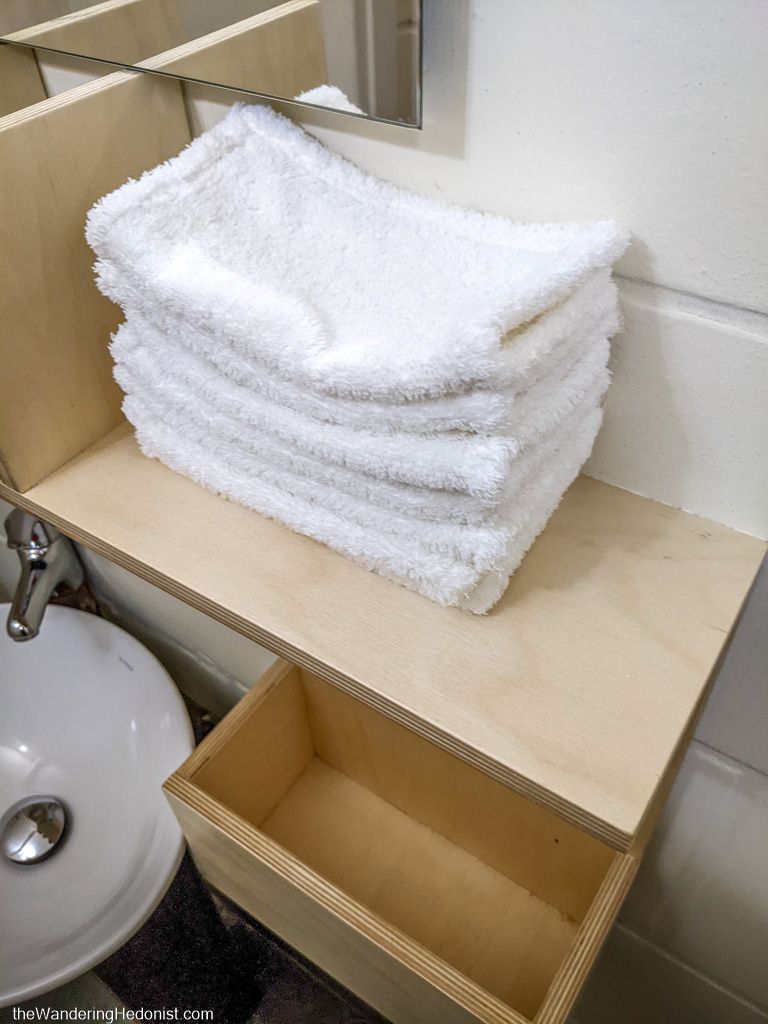
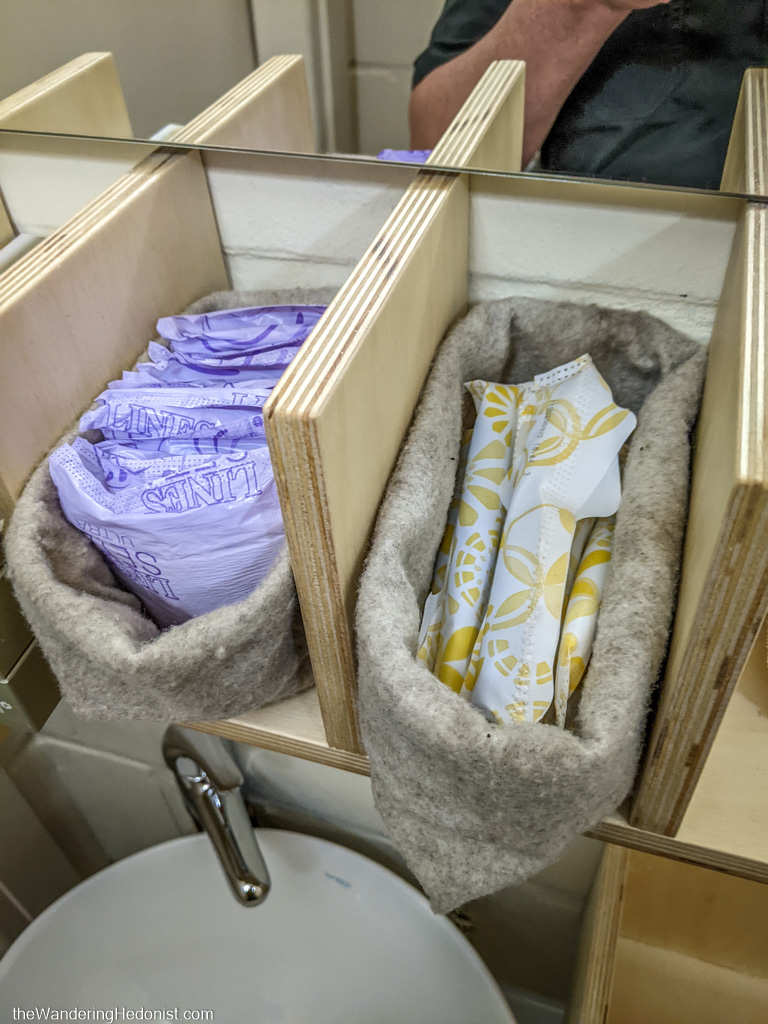
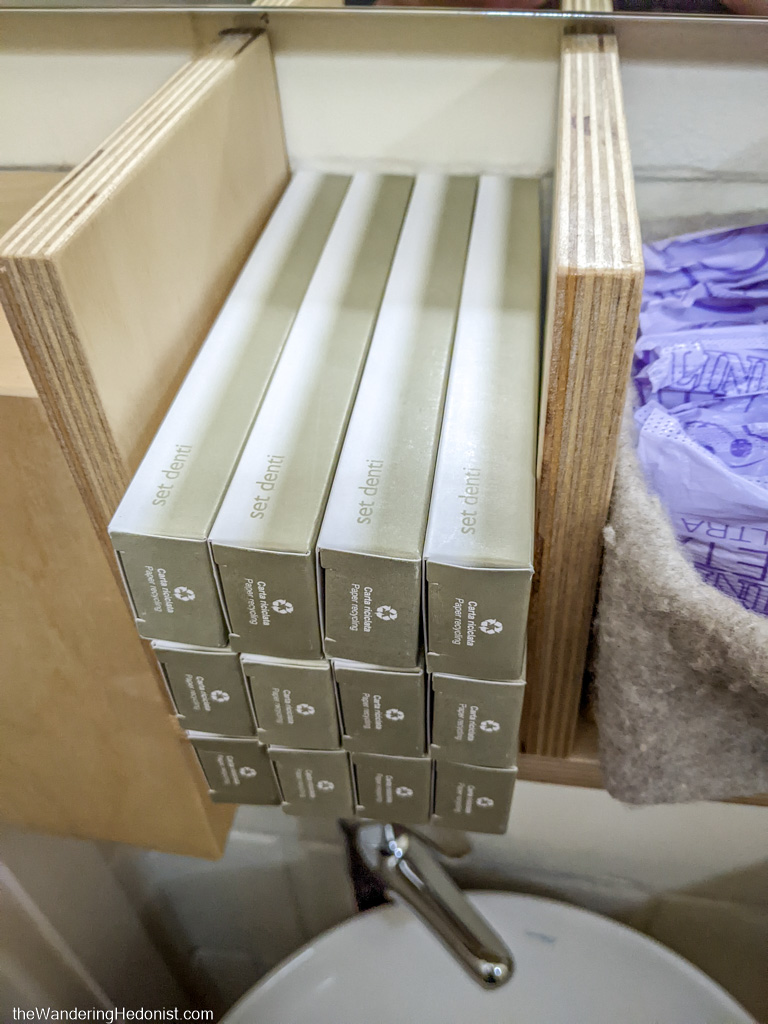
As a final touch, the check comes in this great white porcelain severed heart. You’re brought your jackets and shown out and all of the cooks are waiting at the front door to say goodbye and wish you well. I found it charming and attentive and of the best intentions.
The restaurant
The restaurant itself was comprised of a few rooms within a white stone building in old town with immaculate vaulted stone ceilings but very modern fixtures and furniture. The rooms were bright and spacious. The vibe leaned towards light tan woods with simple varnish, very natural. The lighting was well positioned and adjustable and decently balanced. And of course, the walls all had original artwork related to the food. I was very comfortable in the space. It was neither threatening nor hot. I did see stairs leading downstairs but I didn’t get to see what was down there, so I can’t speak to it.
The wine
Katy was trying to keep the wine at a minimum so we opted for the three glass tasting at 50 euros which was unusually high but we did get refills on the glasses so I think it worked out. We opted for a fourth glass at dessert which was only 4 euros each.
The wines were well chosen. We have been enjoying the southern wines for two months now and have sampled so many different ones. But the sommelier had carefully chosen unusual local varieties that were really interesting and hard to find and well paired.
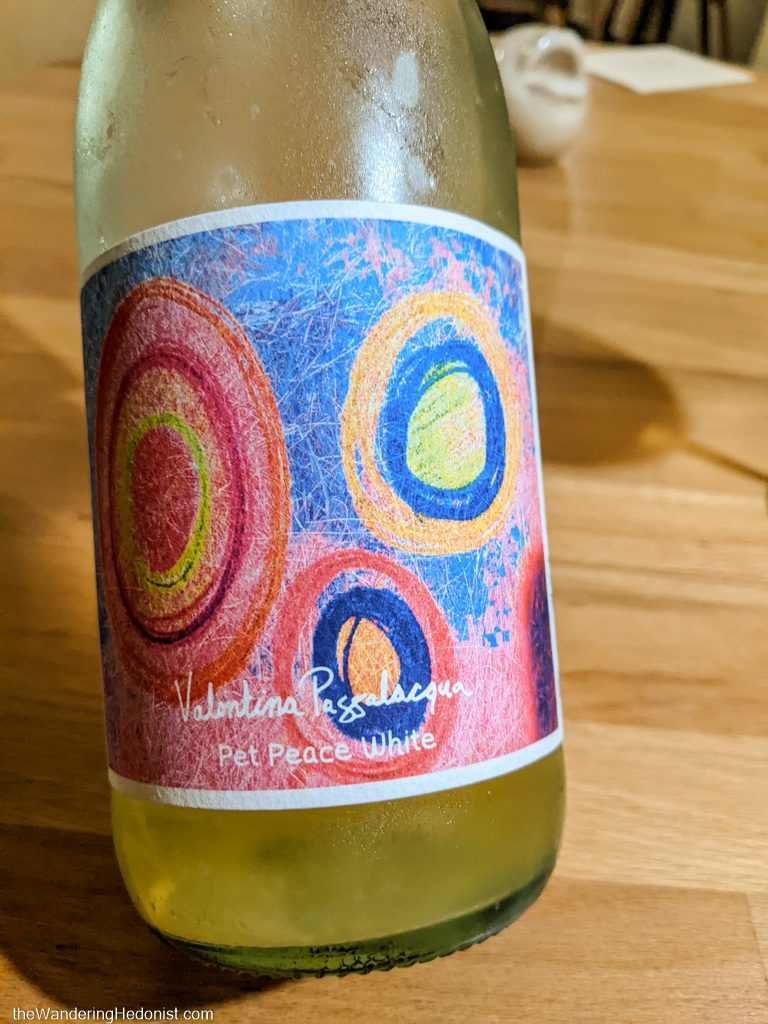
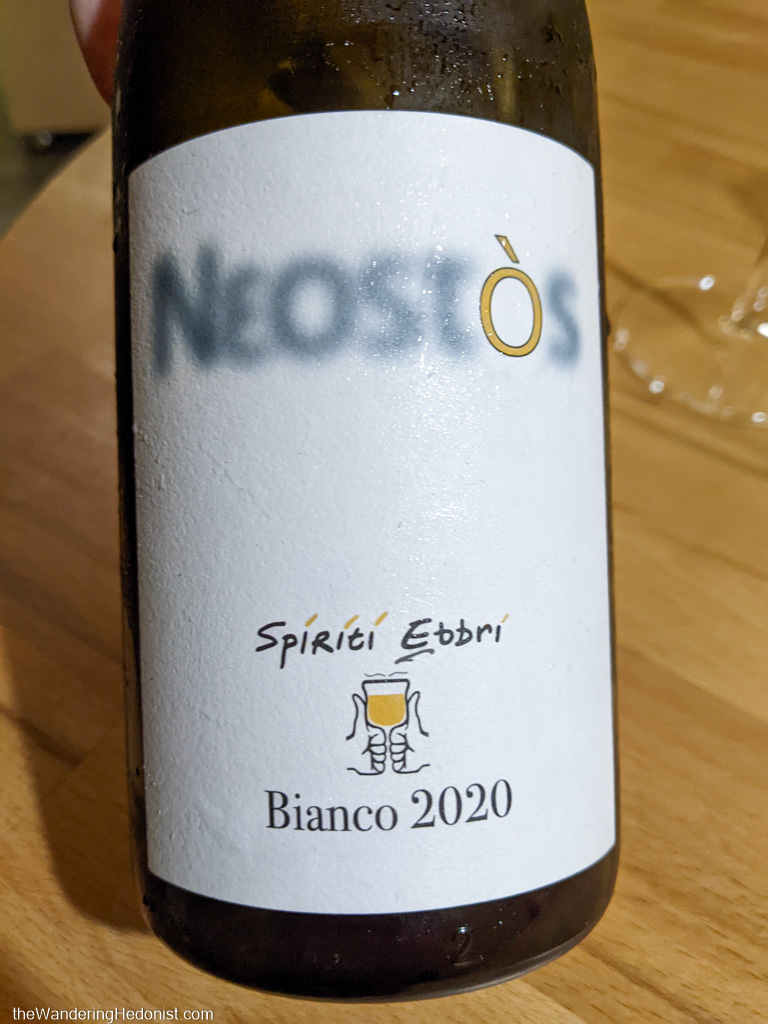
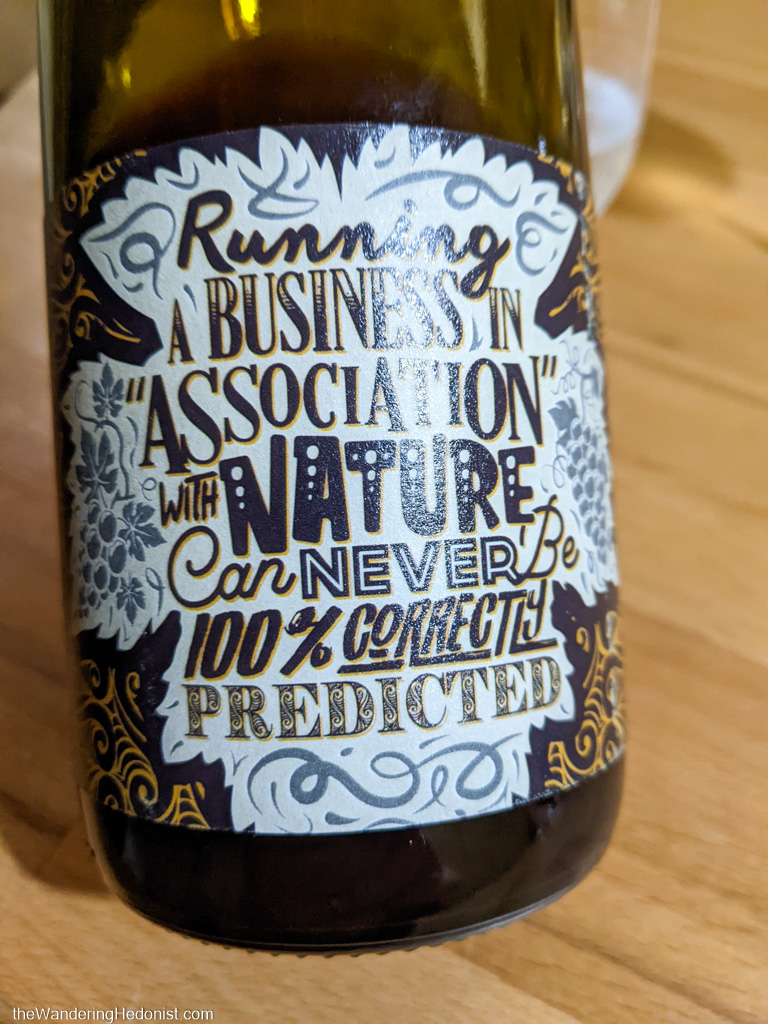
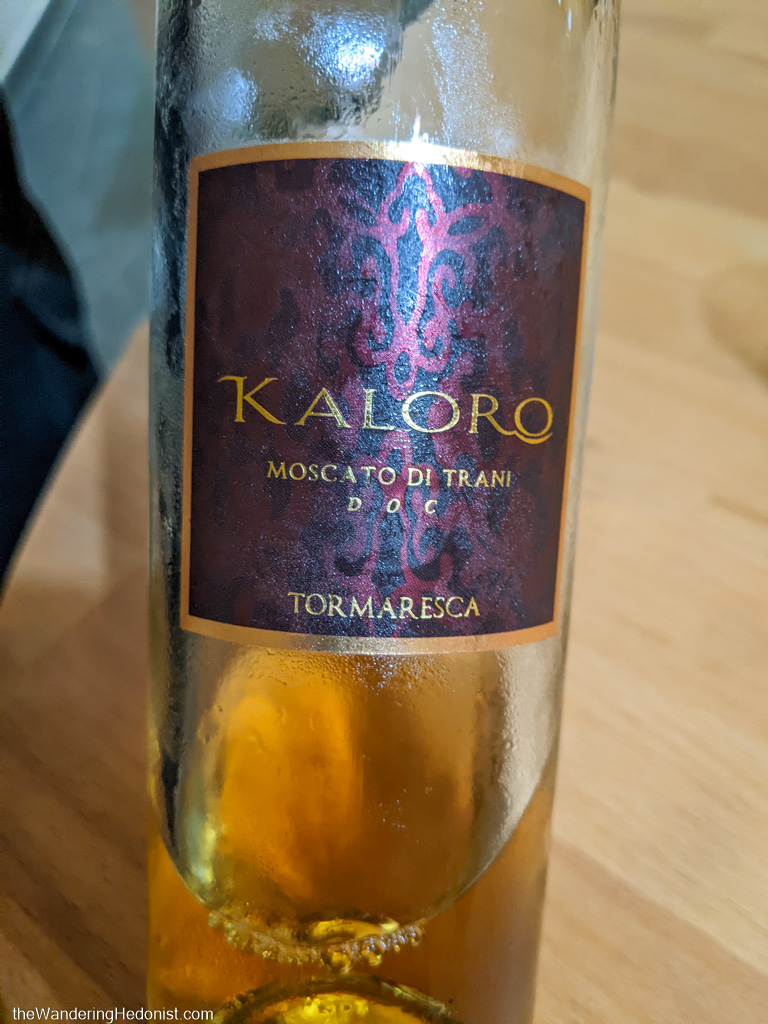
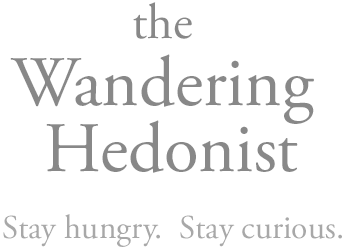

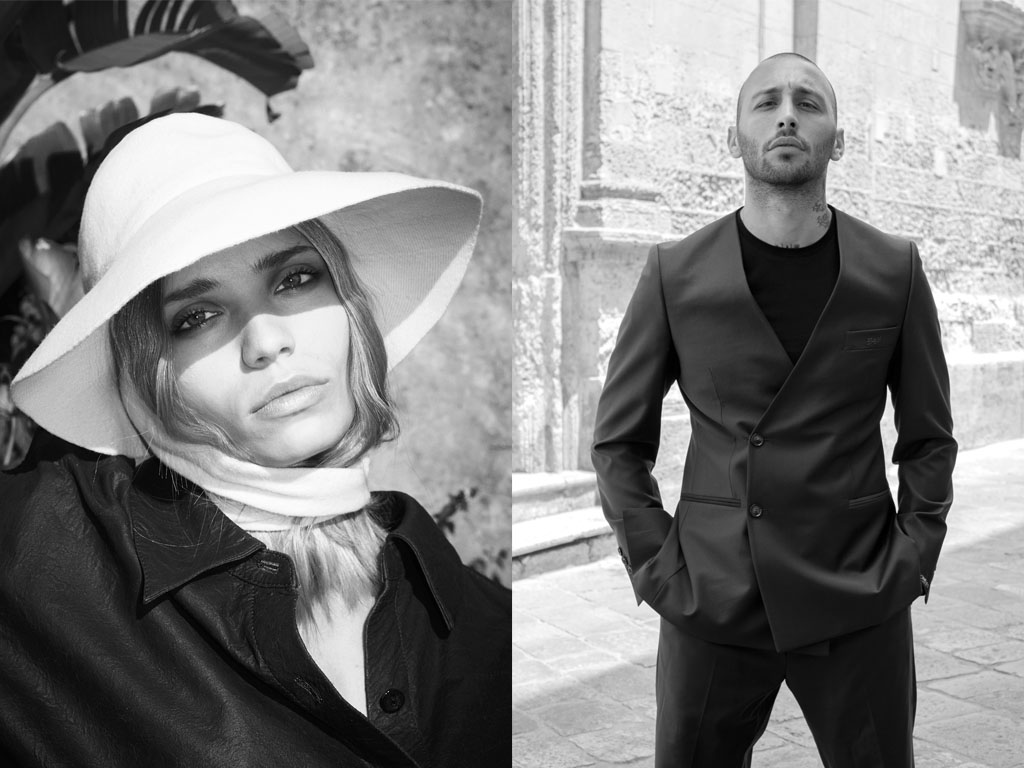
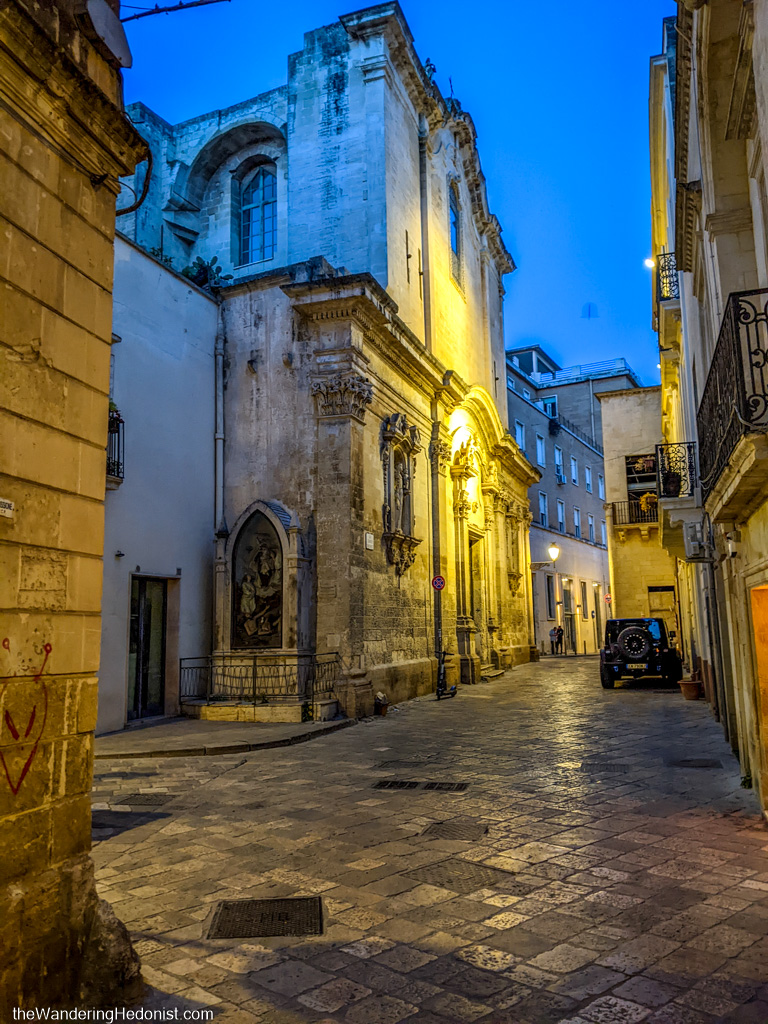
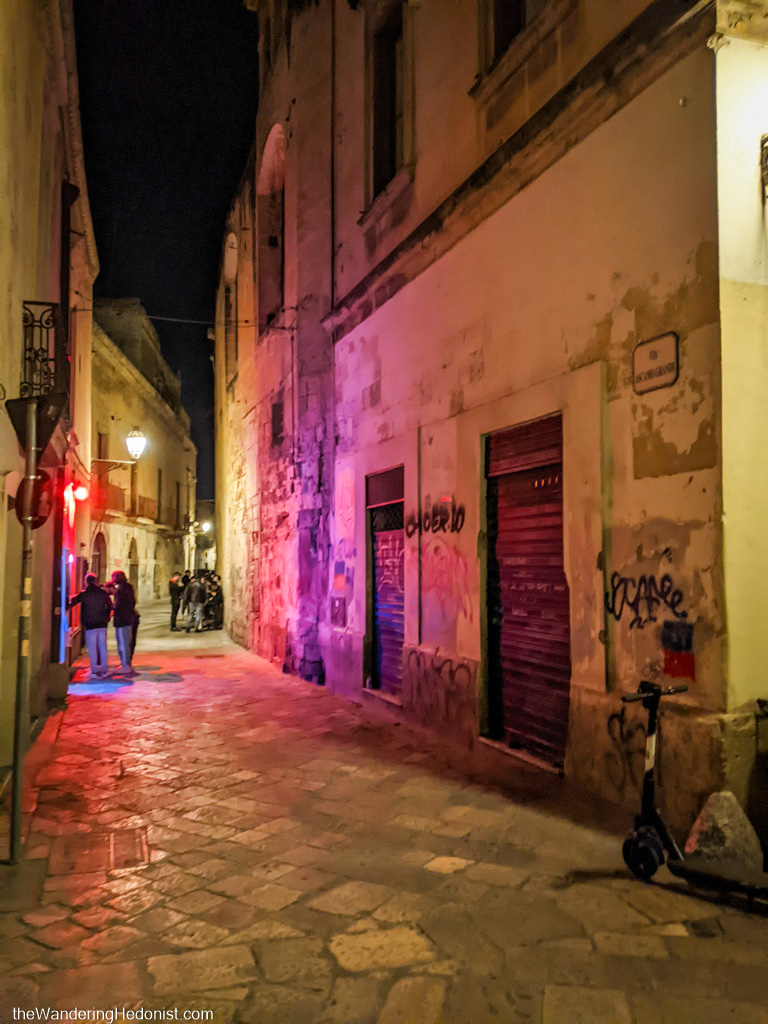
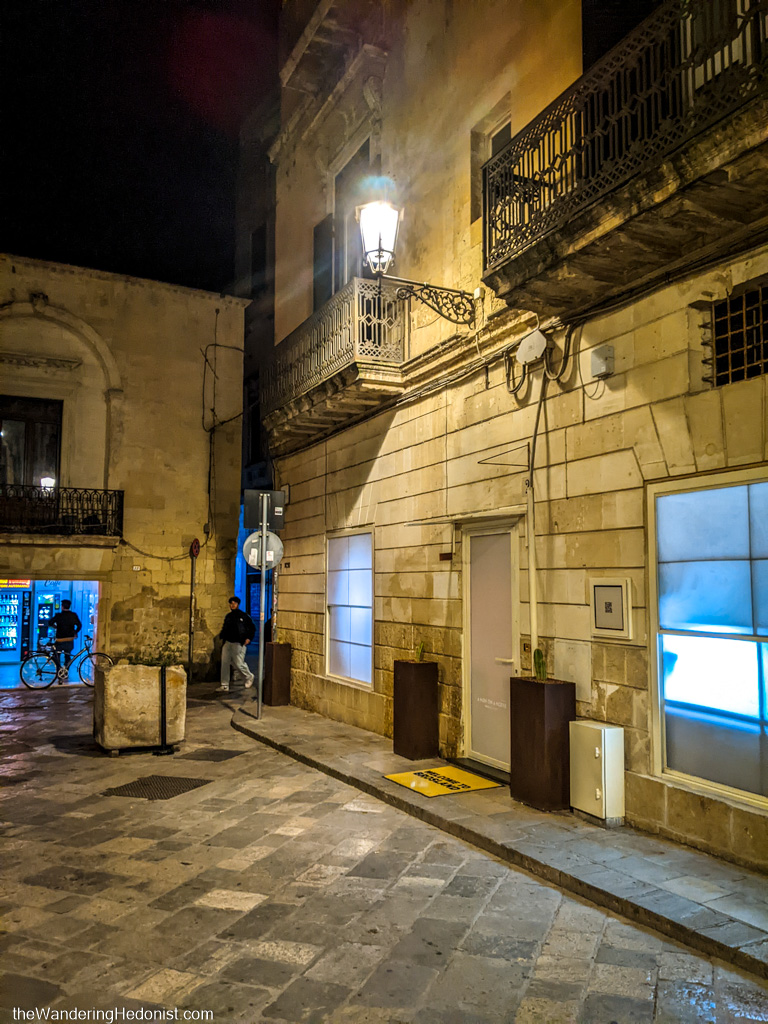
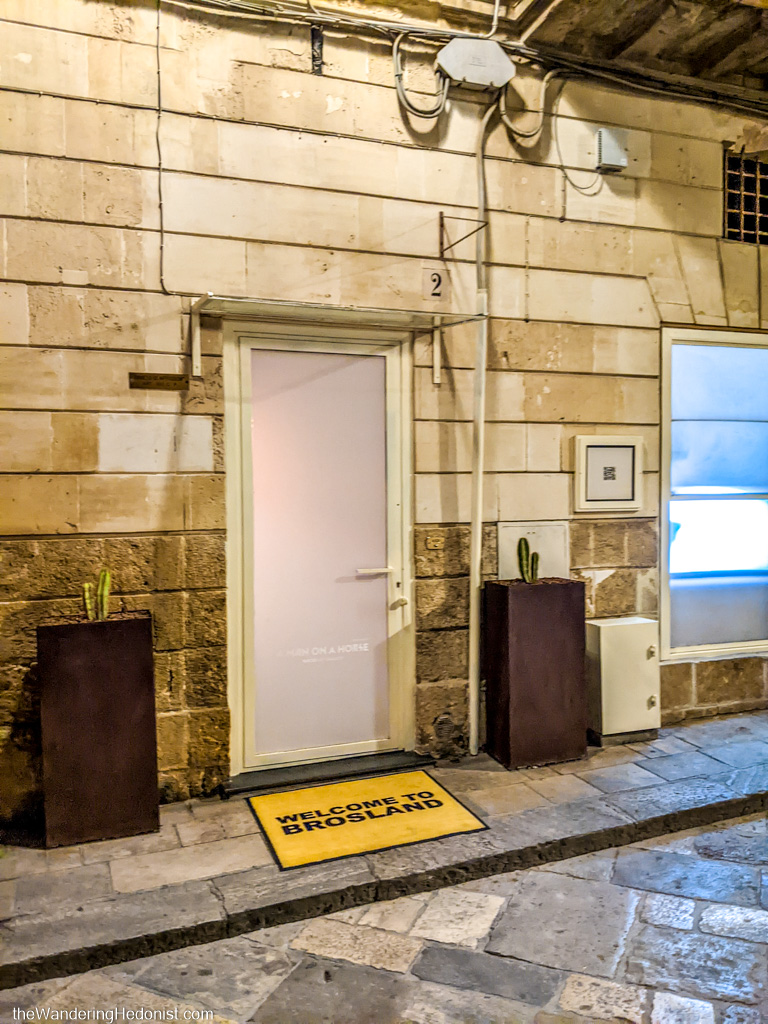










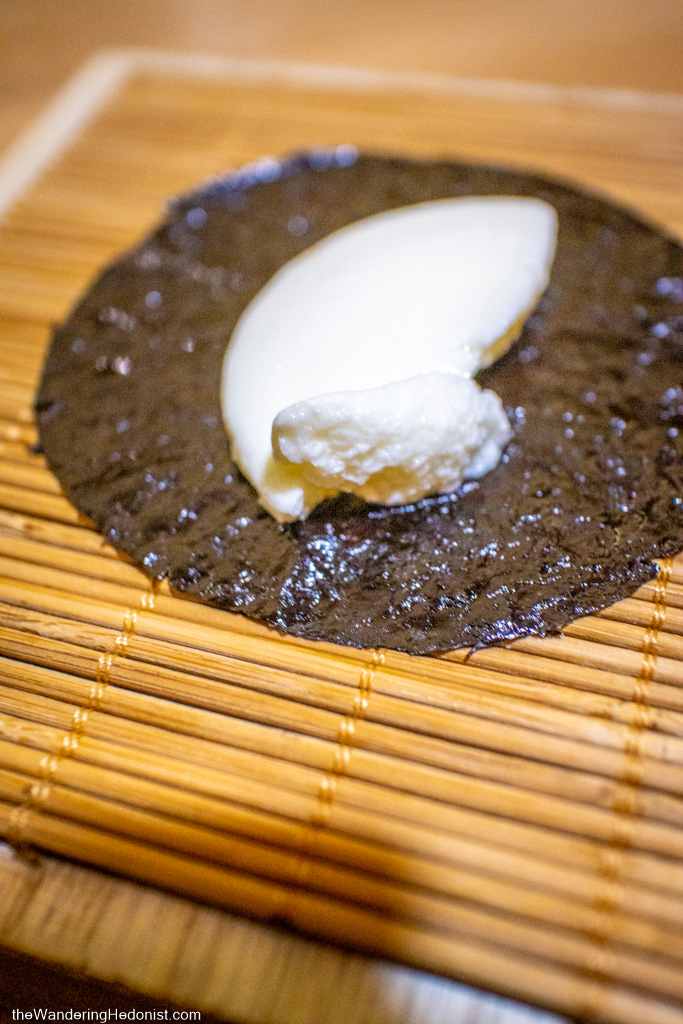

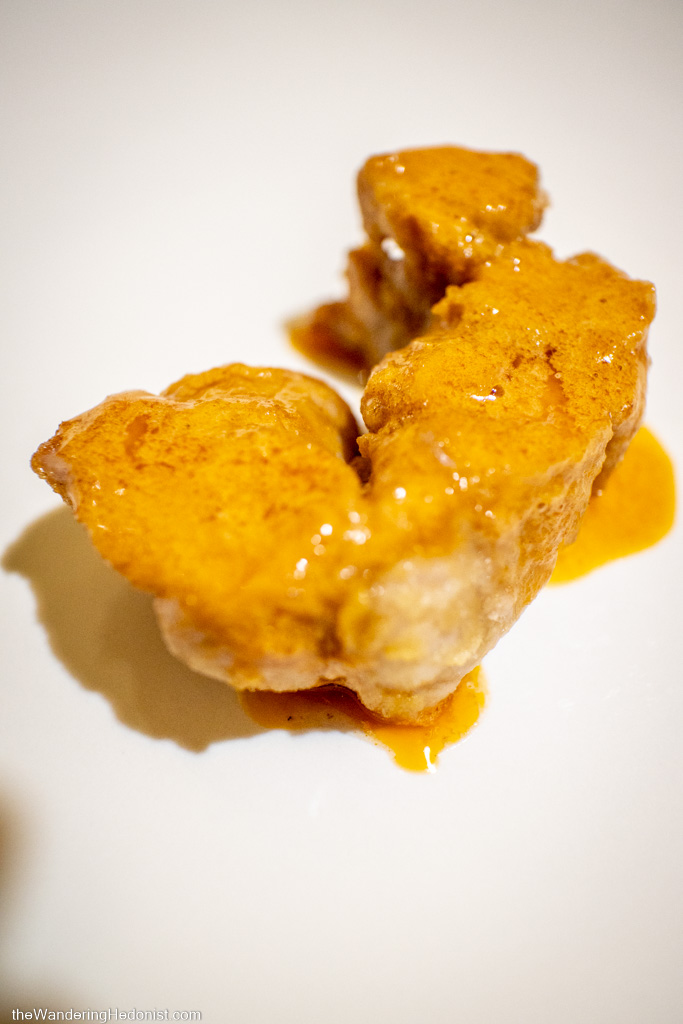


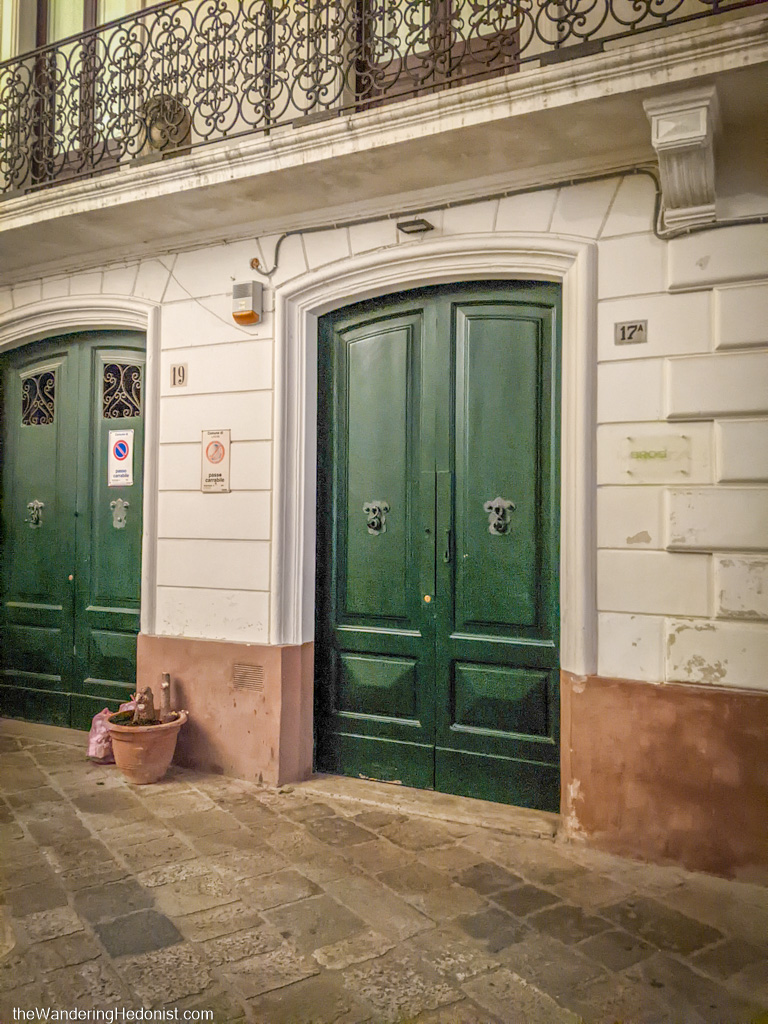
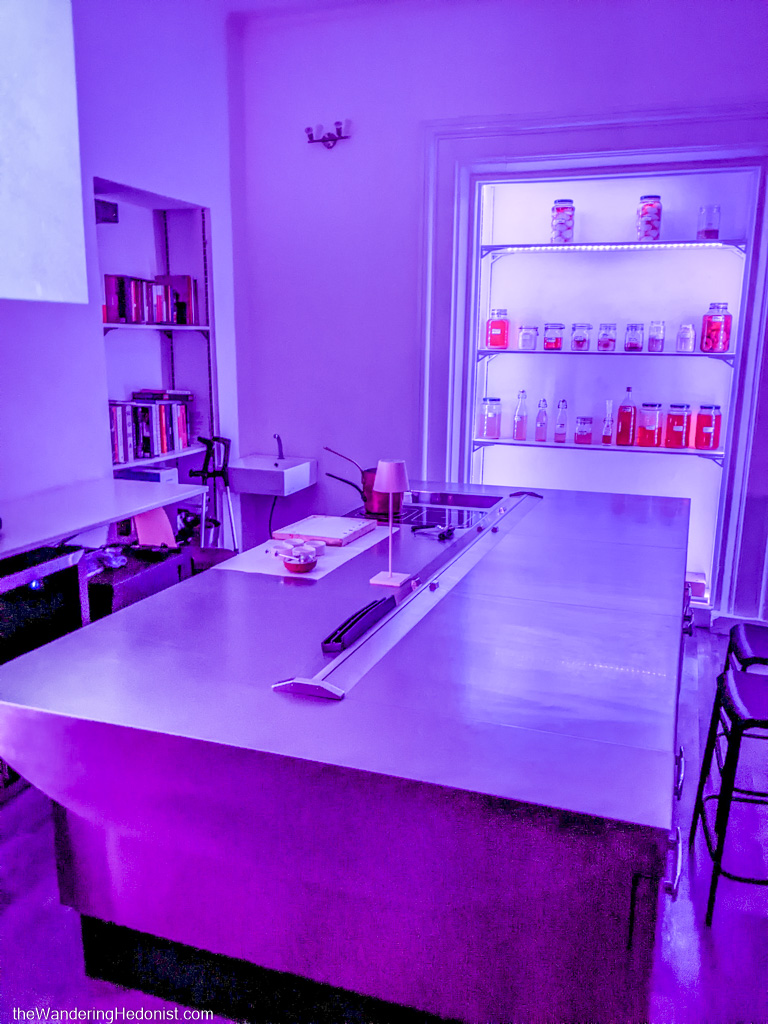


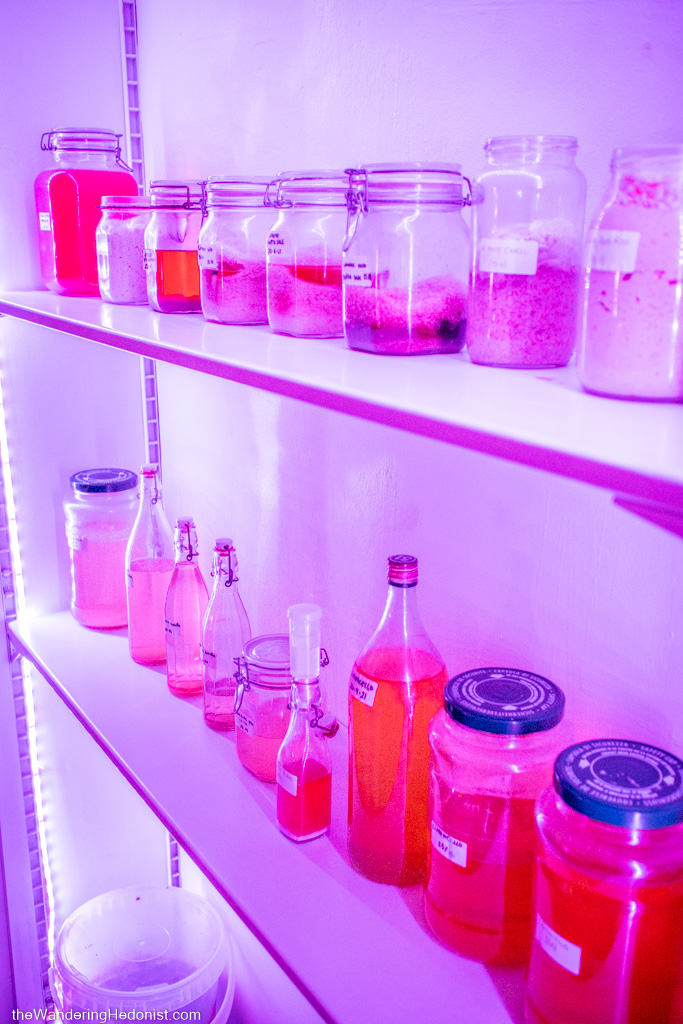
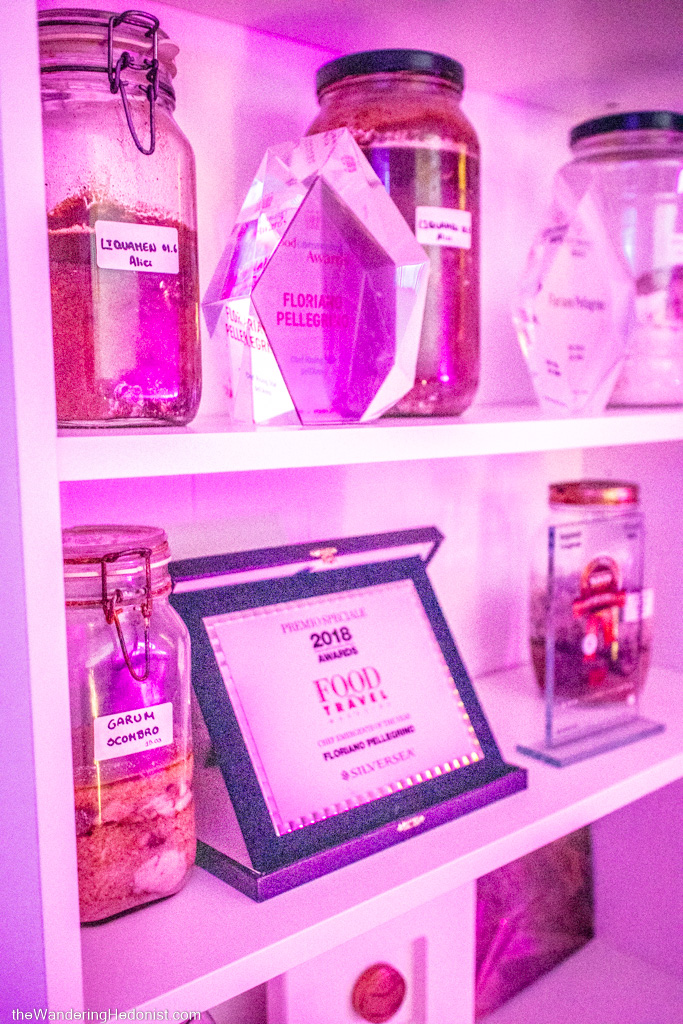
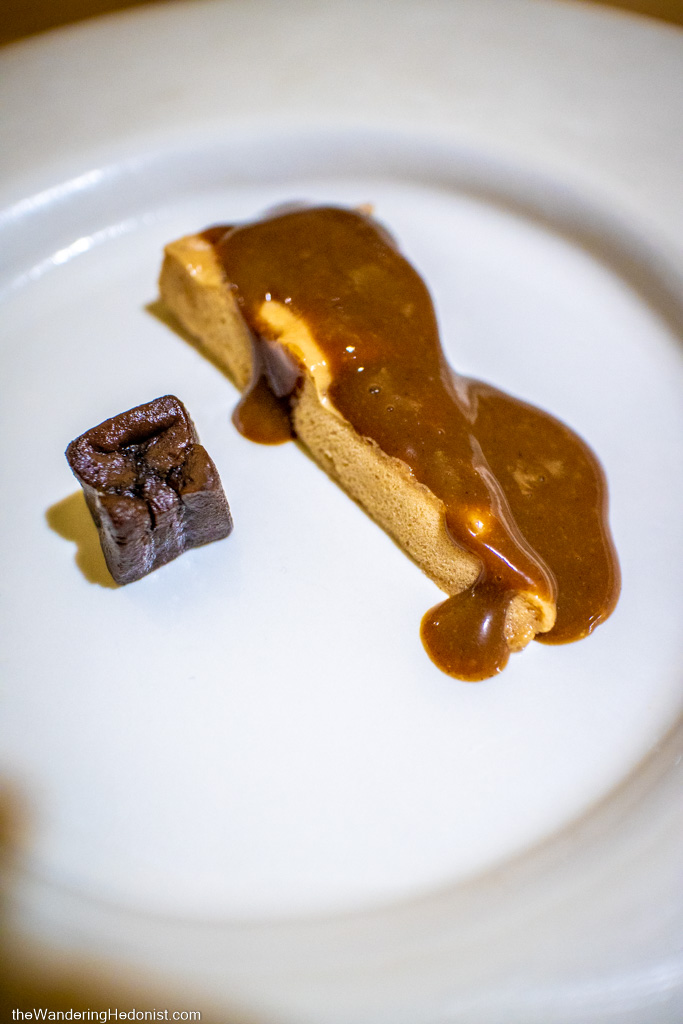




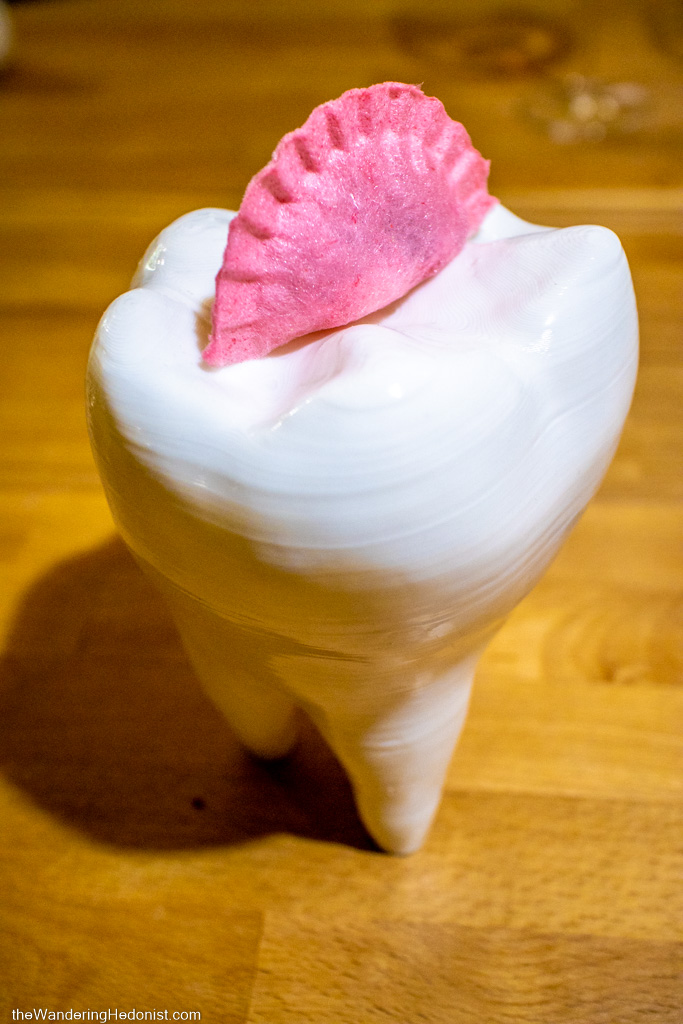

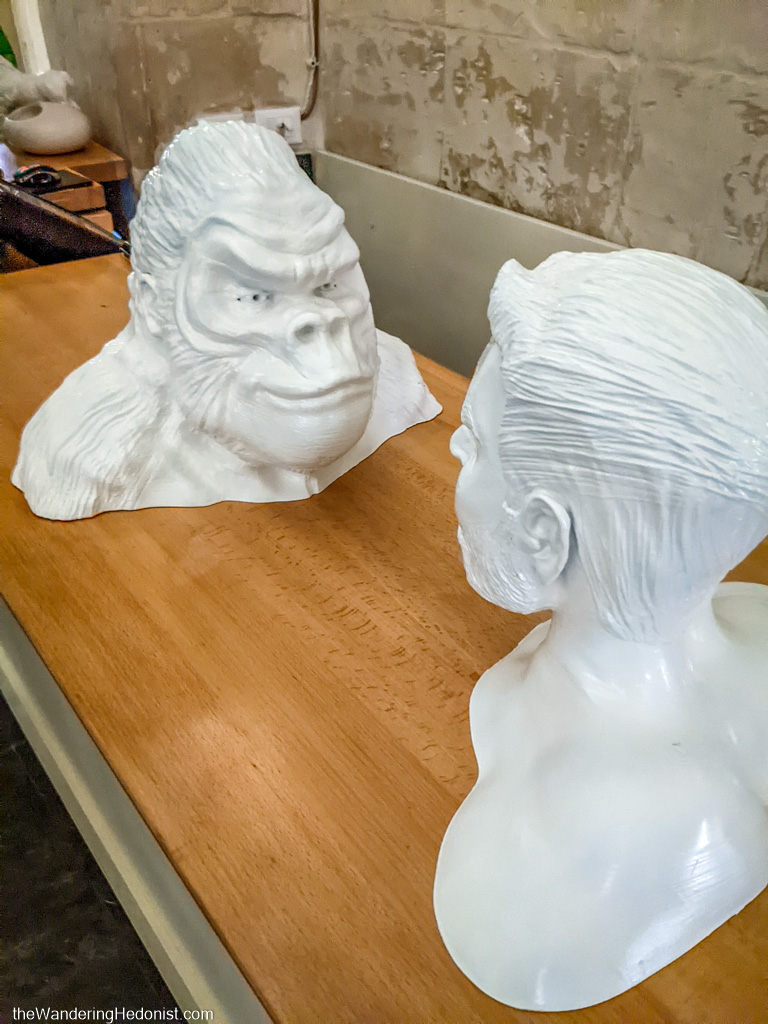
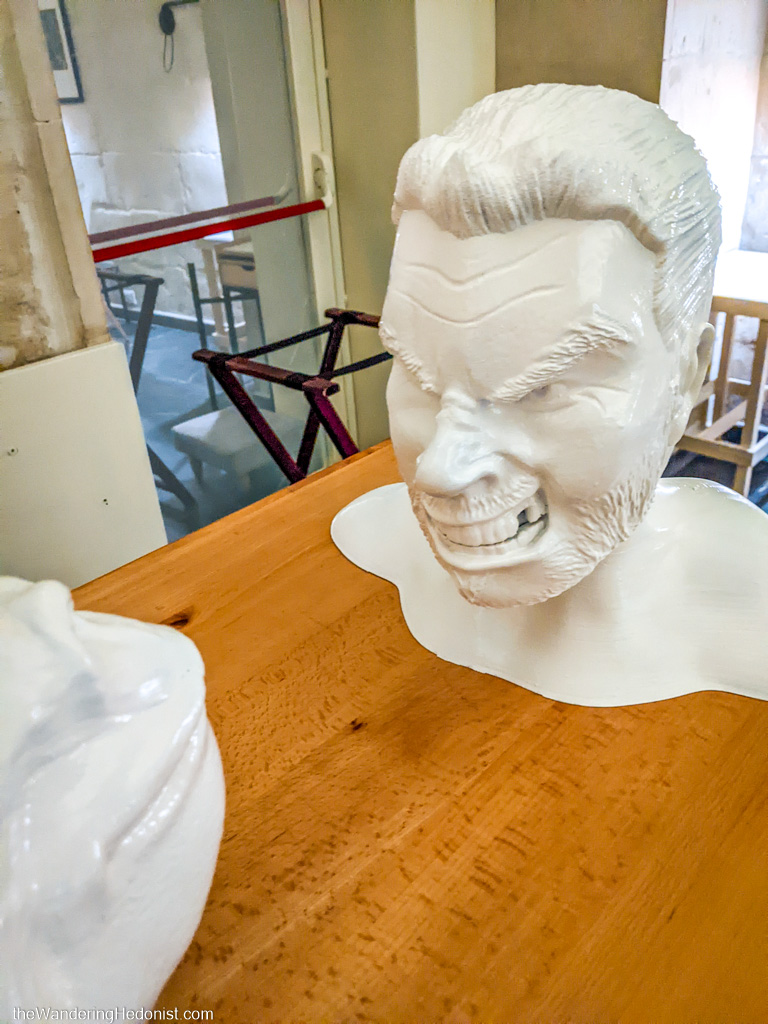






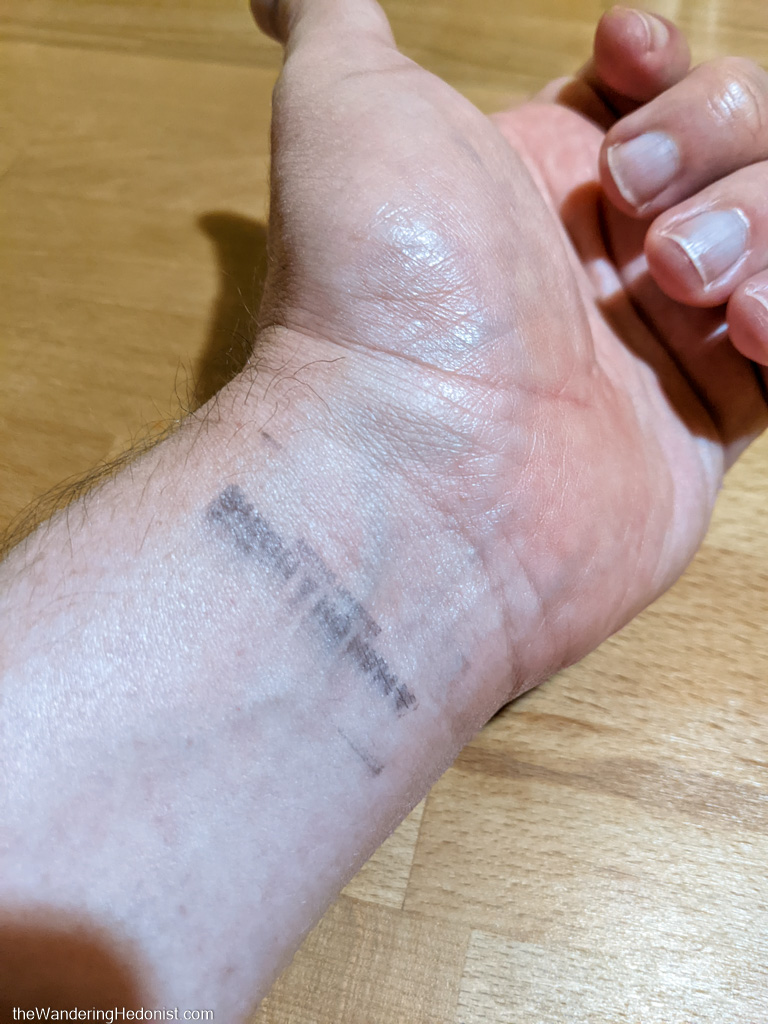

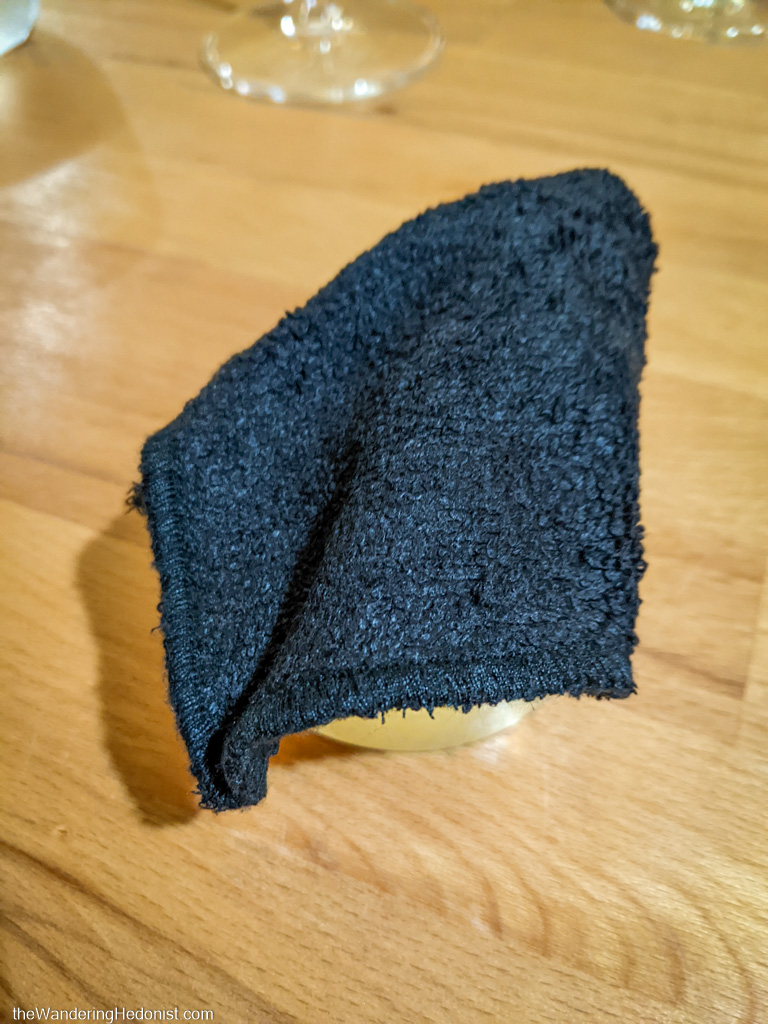
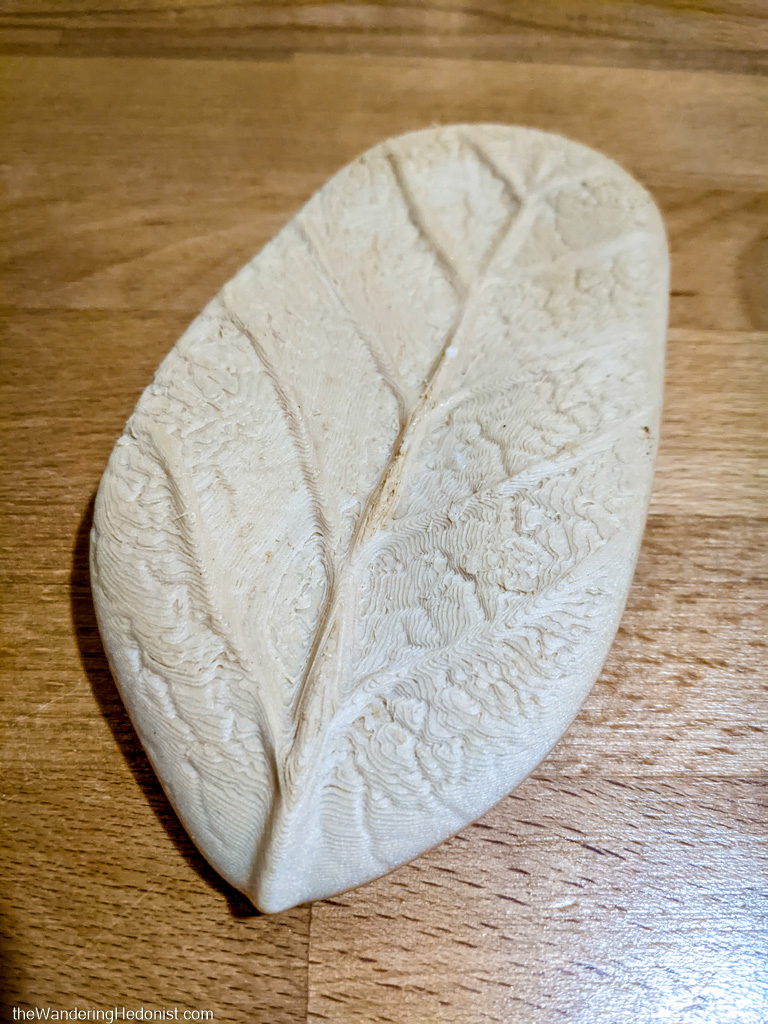

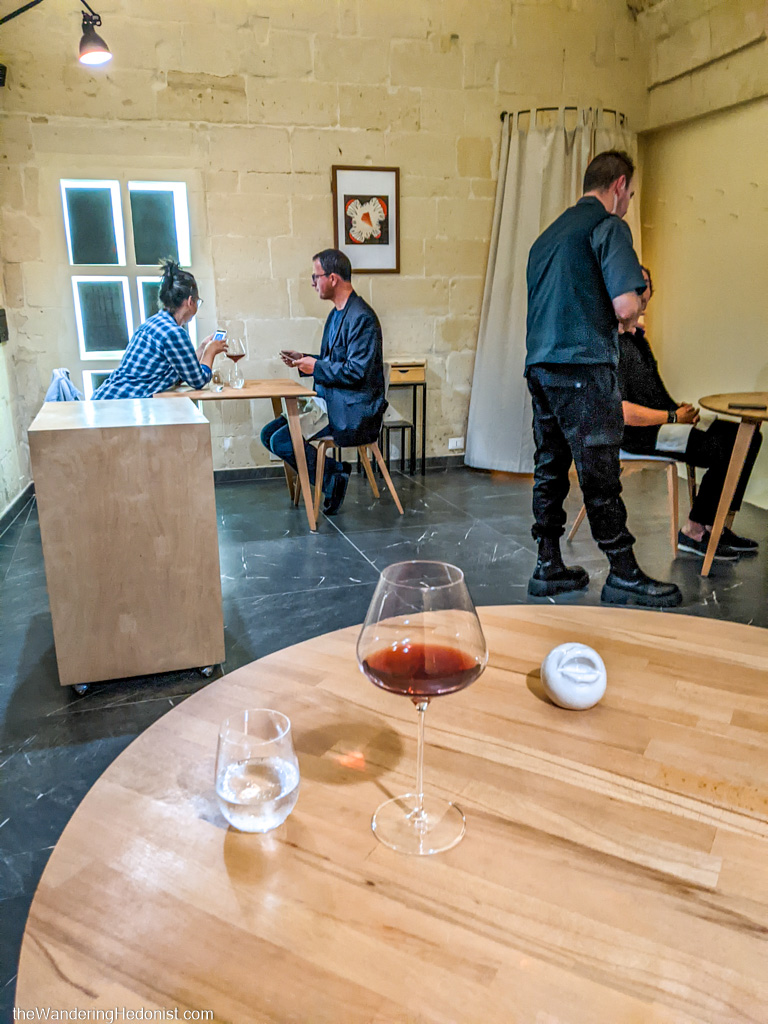
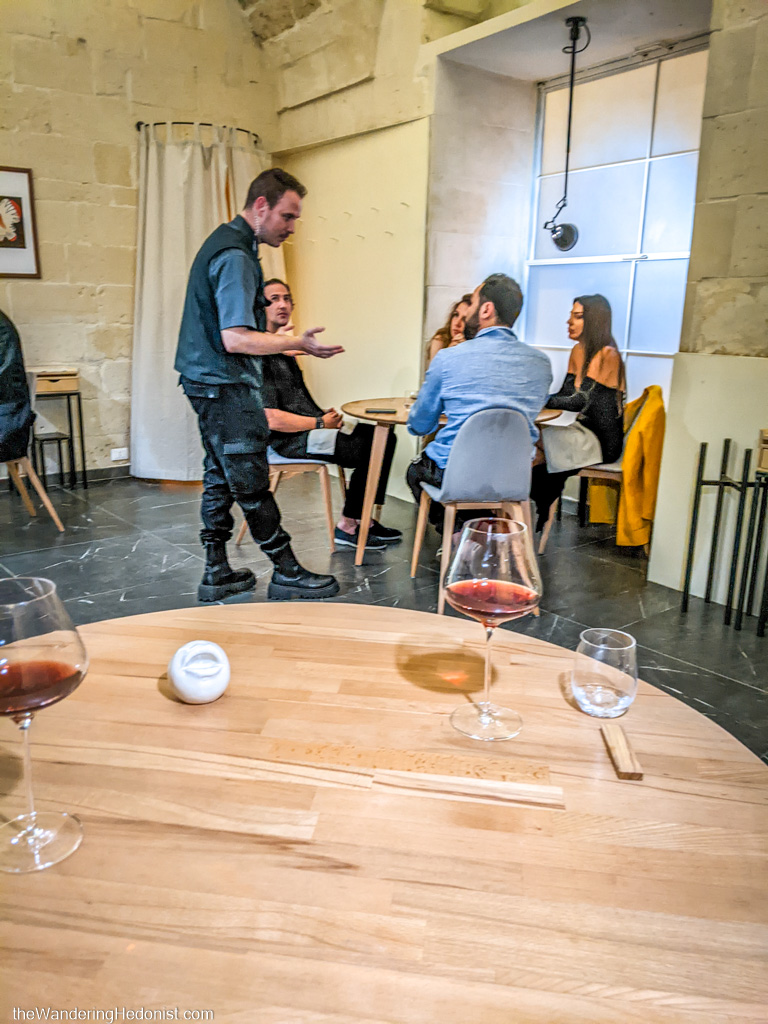
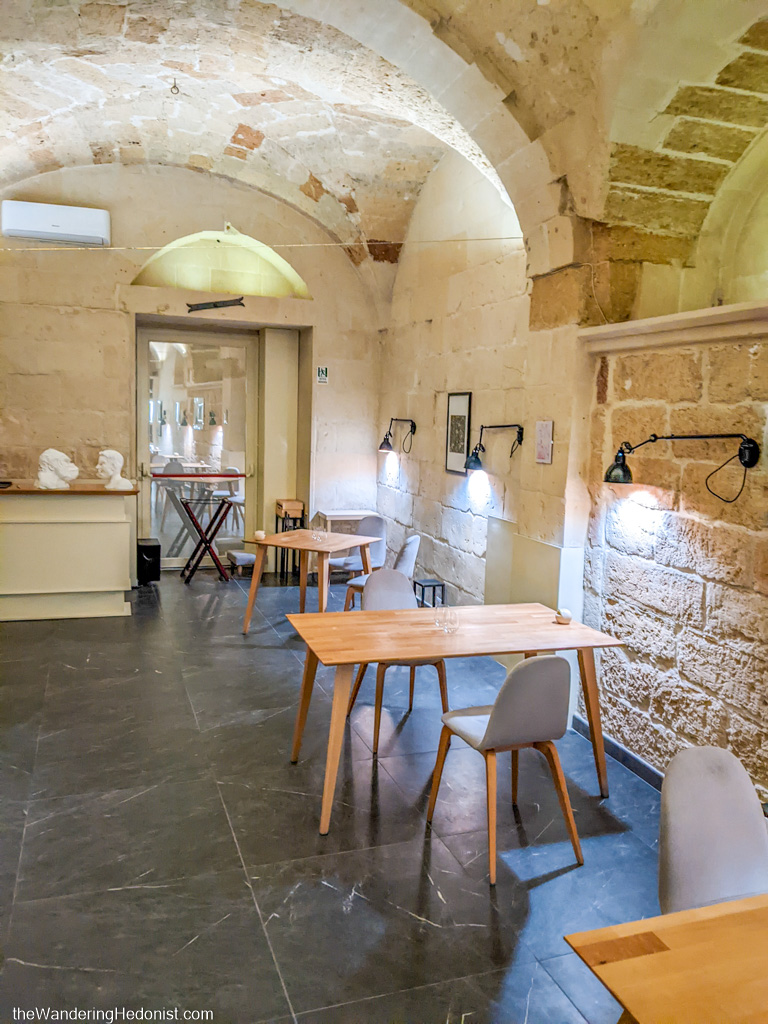
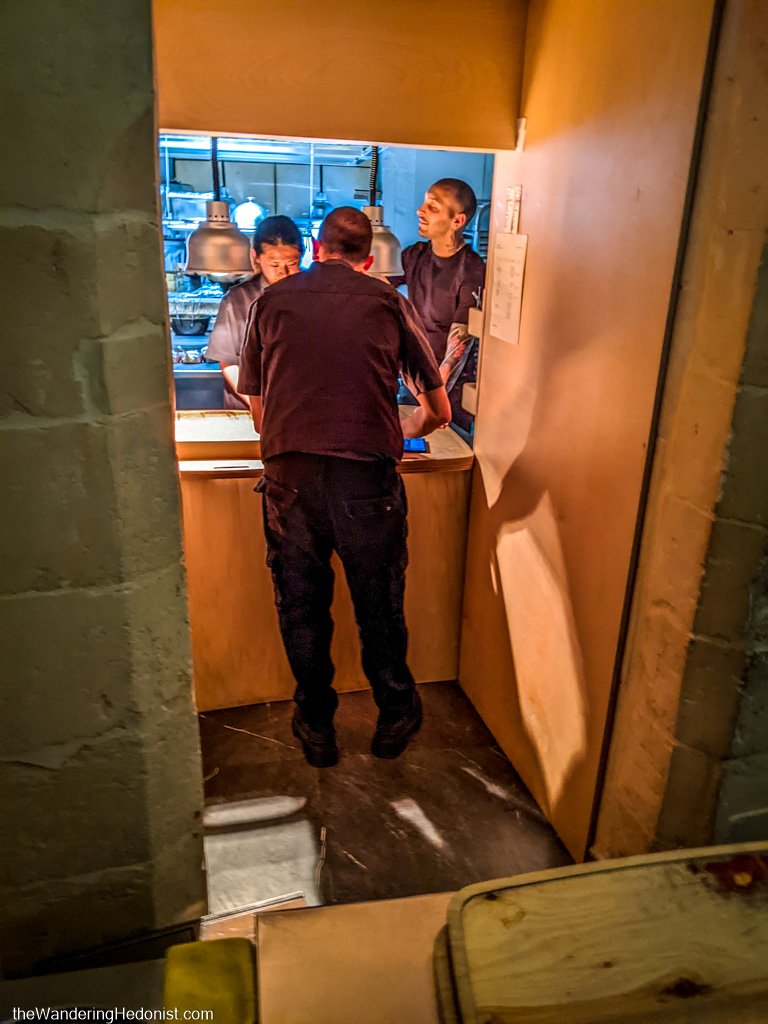
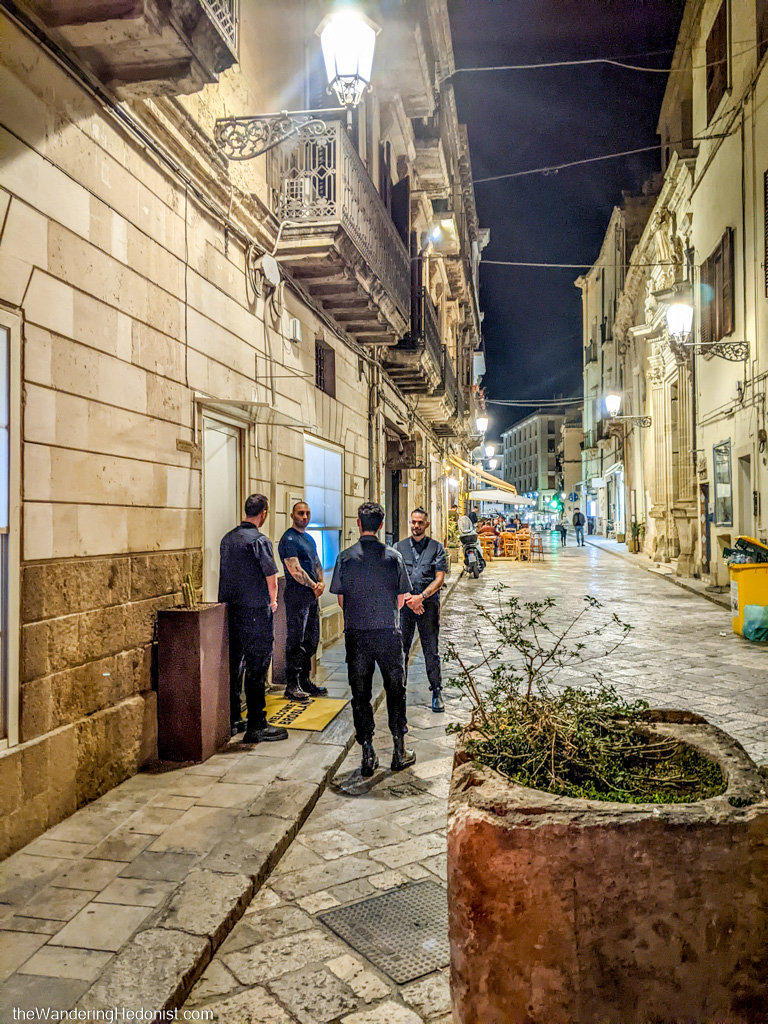

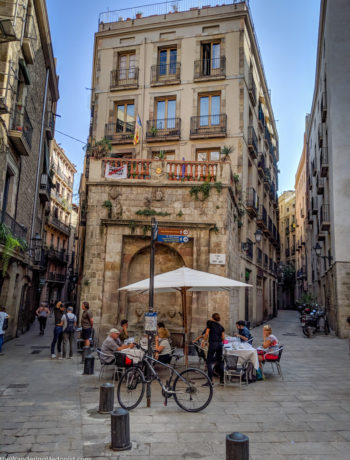
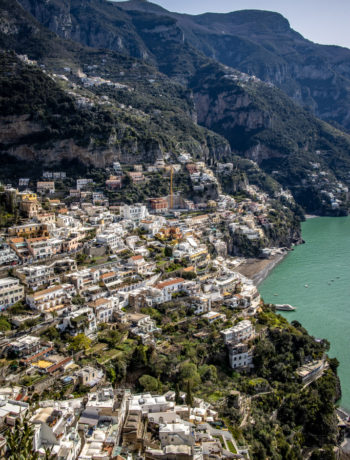
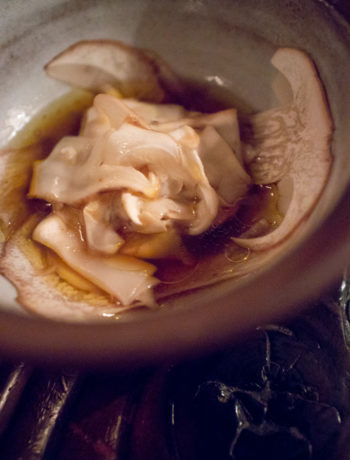
1 Comment
borgix
May 6, 2022 at 12:51 pmExcellent writeup. Now I want to go!